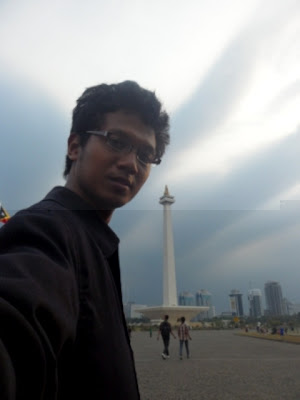Monument design
The towering monument encapsulates the philosophy of Lingga and Yoni. Lingga resembles an alu rice pestle and Yoni resembles a lesung rice mortar, two important traditional Indonesian tools. Lingga and Yoni also symbolize eternal life with the lingga phallic symbol, representing masculinity, positive elements, and daytime and the Yoni the female organs symbol, representing femininity, negative elements, and night. The monument consists of a 117.7m obelisk on a 45m square platform at a height of 17m, the goblet yard. The obelisk itself is clad with Italian marble.
The northern pond measuring 25×25 m was designed to cool water for the air conditioning system in the monument as well as to enhance the beauty of the surrounding area. To the north of the monument, there is a statue of Indonesia national hero Prince Diponegoro by Italian sculptor Cobertaldo. The entrance to the monument is located at the Medan Merdeka Utara or Northern Merdeka Park, through the
The towering monument encapsulates the philosophy of Lingga and Yoni. Lingga resembles an alu rice pestle and Yoni resembles a lesung rice mortar, two important traditional Indonesian tools. Lingga and Yoni also symbolize eternal life with the lingga phallic symbol, representing masculinity, positive elements, and daytime and the Yoni the female organs symbol, representing femininity, negative elements, and night. The monument consists of a 117.7m obelisk on a 45m square platform at a height of 17m, the goblet yard. The obelisk itself is clad with Italian marble.
The northern pond measuring 25×25 m was designed to cool water for the air conditioning system in the monument as well as to enhance the beauty of the surrounding area. To the north of the monument, there is a statue of Indonesia national hero Prince Diponegoro by Italian sculptor Cobertaldo. The entrance to the monument is located at the Medan Merdeka Utara or Northern Merdeka Park, through the


